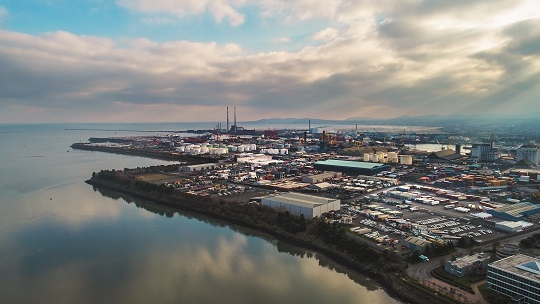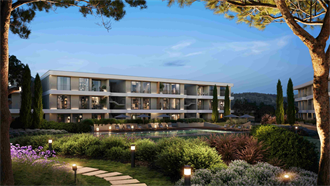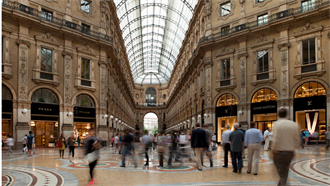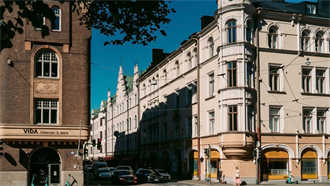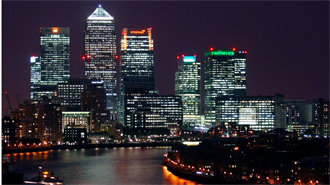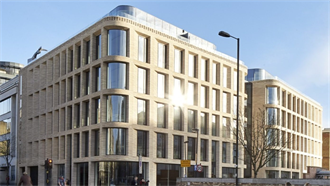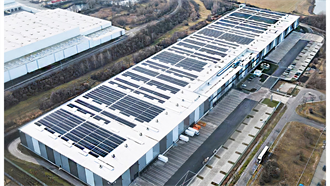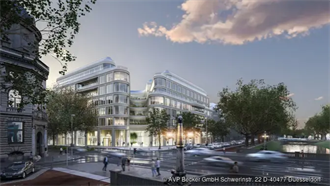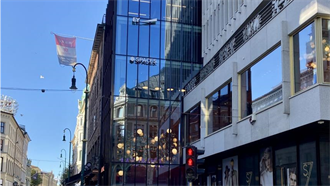E-commerce and Brexit are fundamentally changing Ireland’s logistics market, creating opportunities for investors.
The bumpy road after Brexit has proved particularly tricky to navigate on the island of Ireland.
Since the transition period ended on 31 December 2020, costs and delays arising from new red tape regulating trade between Great Britain and Northern Ireland have threatened both fresh food and medicines entering the province, and were partly responsible for consecutive nights of rioting during April.
In the Republic, there were several waves of stockpiling ahead of the end of frictionless trade with the UK – evident in what Dublin Port Company called an ‘extraordinary’ 22% jump in traffic tonnage in December 2020. After that, there was a choice: adapt to the new rules to continue to use the ‘landbridge’ to transport goods to the EU via the UK; or find alternatives.
The Irish logistics industry moved smartly, with many Ireland-based companies choosing the latter option. ‘There is undoubtedly far more sea transport happening between EU countries and Ireland directly,’ says John Moran, CEO and head of capital markets at JLL in Ireland.
The Irish port of Rosslare, about two hours south of Dublin, saw a five-fold leap in traffic and freight volumes direct to and from EU ports, from three freight sailings each way a week to sixteen each way. This year, the port expects to handle about half the 150,000 lorries which used to use the landbridge via the booming new routes, according to the Irish Times.
Despite the concomitant loss of traffic with the UK, overall ship visits to the port were up by 37% in January 2021 year-on-year. ‘There are people saying to themselves: we cannot be reliant on coming through a third country where potentially there is delay, there are potential issues,’ explains Moran.
‘From a customs perspective it is much easier to bring goods in directly from Europe to Europe rather than bringing them through the UK and having to complete forms and checks...the route is shorter to come through the UK, but now it’s got more risks and more costs associated with it.’
Eyeing expansion
Luckily, there is ample land at Rosslare as well as at Cork, the other commercial port south of Dublin, to accommodate expansion, while Dublin Port Company is adding capacity in the capital’s port by building a new Ro-Ro terminal. Cork has the best deep-water facilities in the country, which is why a lot of Ireland’s thriving pharmaceutical industry is based there; Rosslare, with a much smaller population is expected to develop as an important container warehousing terminal for goods before they are moved on.
‘What I haven’t seen yet is any sort of logistics development at Rosslare or even new demand in Cork,’ says Moran. Irish real estate experts believe the Dublin area with its population of over 1.5 million people, and motorway links south to Cork and north to Belfast, will remain the chief location for logistics fulfillment and last mile facilities, although demand for Cork is expected to increase.
Brexit is effecting significant change at this end of the supply chain, too. Companies that used to fulfil orders for Ireland from the UK have begun switching operations for the first time directly into Ireland and they need space. The head of steam Covid-19 has given online shopping in the last year has only accelerated this new trend and pumped up demand further.
Amazon is the highest-profile company to embark on fulfilling orders in Ireland for the first time, rather than in the UK. The US giant knows the Irish economy well through 10+ years of AWS data centre operations there and it made the commitment to an Irish distribution hub even before the boost to ecommerce from Covid. Third-party logistics companies sat up and took notice - international operator UPS snapped up local Irish parcel delivery company Nightline Logistics Group last September claiming the bolt-on meant it would ‘vault’ into ‘a leading market position in Ireland’.
Amazon’s own parachute drop into Ireland is to one of the two most prime logistics spots in Dublin, on the city’s south west side on the N7 corridor linking Dublin to Cork and the M50 to all points east and north. The company finalised a 654,000 ft² (60,750 m²) build-tosuit deal with developer Mountpark in January 2021 at Mountpark Baldonnell, preletting Unit E on a 15-year lease – although, as always with Amazon, no party directly involved with the transaction is allowed to say anything about it. CBRE brokered the deal.
Construction has been delayed by the four month-long closure of Irish sites since the start of 2021, which was expected to be relaxed in May and practical completion is anticipated in 2022. Meanwhile, in May 2020, Amazon had already leased 65,000 ft² nearby at Greenogue Business Park and the BBC reported in March 2021 that 20 lorries carrying Amazon purchases have been arriving directly into Rosslare from the continent every day since the beginning of this year when most would previously have come from Britain.
Increased demand
Gavin Butler, director of industrial and logistics at Savills, says: ‘We have seen increased demand from UK retailers and logistics companies because of delays at the ports and getting product over here. Most of the established 3PLs either have or potentially have requests for Dublin which are Brexit-related. Some are subject to being awarded contracts from customers.’ Garrett McLean, head of industrial and logstics at CBRE Ireland, says it is noticeable how demand for larger units is increasing.
‘The 50,000–100,000 ft² category accounts for nearly 40%. That’s where we are seeing the take up. And it is 15% for units of over 100,000 ft².’ (See first pie chart). Overwhelmingly, the demand is for logistics and warehouse space. (see second pie chart). ‘Mountpark were the first international developers to come into the Irish logistics market, buying the Baldonnell site in 2016, and the first to spec-build 120,000 ft2 units,’ he continues.
‘Before that, Irish developers would spec 50,000–70,000 ft² – that was the largest.’ Butler agrees. ‘The difference this time versus the pre- GFC development cycle is that there has been a flight to size.’
In 2018 and 2019 Mountpark attracted Home Store & More and United Drug to those early spec buildings in Phase 1 at Baldonnell. United Drug, owned by the US McKesson Group signed a 120,000 ft² prelet for unit A on a 20-year, CPI index-linked lease and Irish retailer Homestore & More for 200,000 ft² unit B. The next phase, due to be built this year is Unit C, 88,000 ft², which has also been prelet to Homestore & More recently on a 15-year lease, while unit D, of 133,000 ft², has received planning consent.
Says McLean: ‘We have strong interest and proposals out on unit D and Mountpark hasn’t even put a shovel in the ground yet.’ The largest spec units to be developed in Ireland so far aren’t at Mountpark Baldonnell but at Greenogue Logistics Park. JLL and Savills are advising Palm Logistics and Irish group Jordanstown Properties on 452,000 ft² comprising one building of 286,000 ft² and one of 166,000 ft² which have started on site.
More are planned by rival developers. In the second prime logistics area around Dublin Airport, north of the city centre, Irish company IPUT got consent this year for four buildings at Quantum Distribution Park, the largest 206,000 ft²; international investor Henderson Park acquired Horizon Logistics Park via its 2019 takeover of Green Reit and has a 160,737 ft² spec unit on site and is planning the next phase.
A site which Cushman & Wakefield has put up for sale for the Callery family with 55 acres (22 ha) zoned for industrial/logistics, Airlink at the M2 Cherryhound Interchange in north Dublin, is guiding €330,000 an acre, an as yet untested price.
Compelling vacancy rates
Agents put the vacancy rate for modern space over 10,000 ft2 at a mere 1.12% (CBRE) and 1.2% (Savills). Butler says: ‘An interesting trend is that 94% of speculatively built stock brought to market in 2020 was let prior to completion which is evidence of the current pent-up levels of demand,’ and he is absolutely confident that the trend will continue. There are 13 buildings across eight developments due for completion in 2021, totalling just over 1.4 million ft², all of which began construction speculatively.
Savills says about 75% is either committed or in advanced stages to lease. CBRE bumped up its estimate of demand for Dublin at the end of Q1 2021 to 185,000 m². Butler says the near non-existent vacancy reflects the lack of good quality second-hand space to be had but also, ‘the preference of occupiers to occupy modern stock despite the higher rents and longer lease terms required by landlords compared to second-hand buildings.’
For international real estate investors, news of developers building in Ireland at scale and speculatively opens up opportunities to deploy significant amounts of capital where previously few existed. Last year, KKR and Palm Capital bought into the prime market at a discount by taking the leasing risk on Jordanstown’s two speculative buildings totaling 450,000 ft² at Greenogue. The gross development value is €85 mln.
This year JLL advised Jordanstown on a €53 mln forward sale to an Irish private family office of three more buildings – two prelet – which the developer is constructing at Greenogue. The yield is said to be 4.25% which is a historic low and represents rapid compression from 5% less than 12 months ago. It follows evidence from the Project Rose transaction, agreed at the turn of the year. In that deal, JP Morgan Asset Management agreed to pay circa €500 mln to Mountpark to scoop Rose’s package of UK, Irish and French new logistics developments. The Irish properties were Units A and B in Baldonnell Business Park. The yield on the French and UK assets was below 4% with the Baldonnell warehouses achieving 4.25% a source said.
Yield compression ahead
With weight of capital building up, and the 4.25% yields, Irish logistics still offer cross-border investors a country discount. Agents expect prime yields to compress further during 2021 despite rents being relatively high compared to some other markets. ‘When you have logistics capital values approaching €200 per ft² and 500,000 ft², you are able to offer the market €50 mln+ lot sizes which piques the interest of international capital’, Moran says.
German funds and pan-European managers such as Savills IM are interested in buying core. On the more core-plus through to opportunistic side, early movers Quanta Capital backed by Oaktree and Exeter Property Group (now EQT Exeter after takeover by EQT) are active. Exeter sold a portfolio to GIC last year with a €201 mln Irish component of 30 assets that had been largely owned by Morgan Stanley.
Kennedy Wilson, which has a successful track record as an early investor in Ireland in offices and then PRS, is researching the market and is expected to pop up soon as it is said to be convinced rents are about to rise above the likes of the €10.45 per ft² which life sciences group Thermo Fisher is to pay on a 10-year lease for Crane House at Dublin AirPort Logistics Park.
Arrow, Martin McCarthy’s new company is looking for industrial opportunities for its SIRE fund; M7 which acquires for Blackstone’s Mileway is buying smaller units. ‘To an extent,’ says Moran, ‘the logistics activity now reminds me of what happened here in the office market after the GFC six or seven years ago.’ This time though, it is e-commerce and Brexit, rather than tech companies, driving the expansion.

